Breathe Easy: Yoga for Respiratory Health
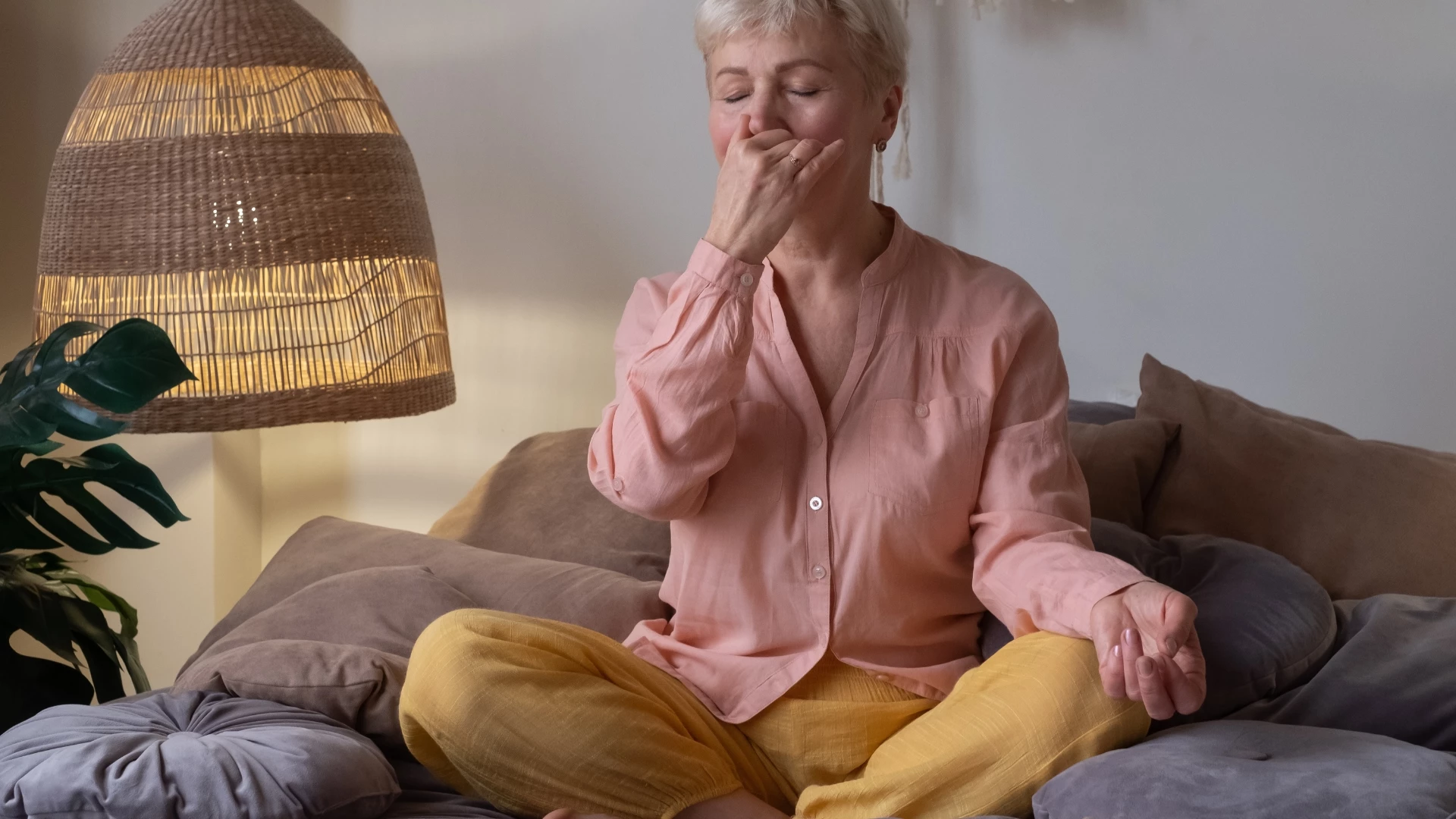
Article At A Glance
As we age, our vital lung capacity decreases. Our diaphragm becomes less elastic, and our ribs become thinner, making it more difficult for our ribcage to expand. Our ability to exhale deeply is crucial to our ability to inhale deeply. Pranayama, yogic breathing, is key to practicing yoga for respiratory health. Here are two yogic practices that can expand our lung capacity.
If the past few pandemic-ridden years have taught us nothing else, it’s how vital our respiratory health is. As we get older, it becomes even more so because we are more vulnerable to respiratory illnesses due to changes in the vital capacity of the lungs. And if you are managing multiple conditions (such as heart disease or diabetes), it becomes especially crucial to increase lung capacity as individuals with comorbidities experienced much higher mortality rates. As yoga practitioners, we have a powerful tool in our toolbox: yoga to increase lung capacity.
Lung Capacity and Aging
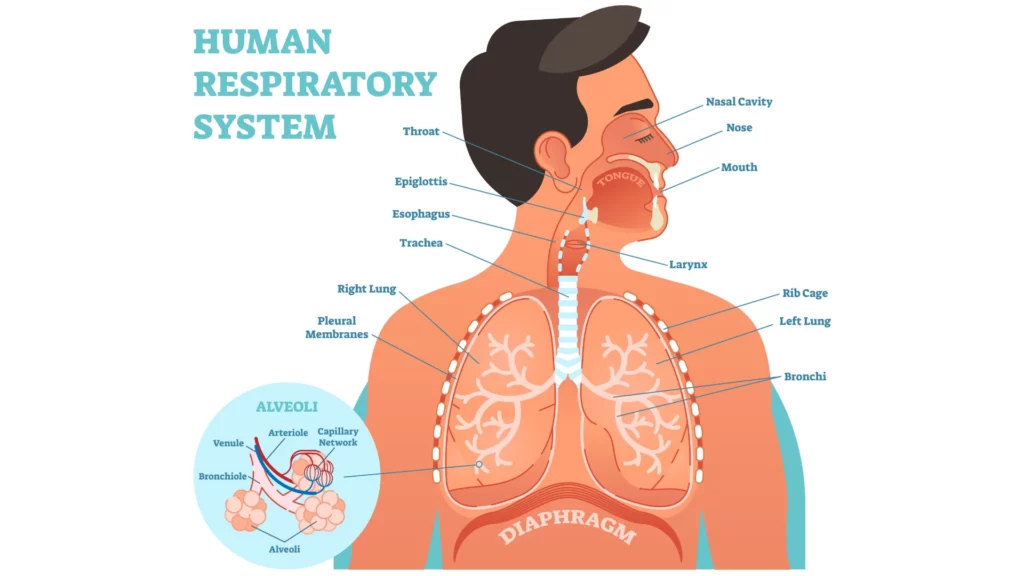
According to the American Lung Association, changes to lung tissue, muscles, and bones impact breathing and particularly lung capacity as we age. The maximum amount of air your lungs can hold—or total lung capacity—is about six liters, about the equivalent of three large soda bottles.
Your lungs mature by the time you are about 20 to 25 years old. However, after about 35, they gradually decline in function, affecting breathing. Some of the age-related physiological changes that impact lung capacity include:
- The diaphragm, the large, dome-shaped muscle that sits below the heart and lungs, decreases in elasticity, gradually weakening the lungs’ ability to inhale and exhale.
- The ribcage bones become thinner and change shape, making expanding and contracting with breathing difficult.
Inhaling and Exhaling Are Equally Important
In fact, starting in our 50s, the ribcage tends to become permanently elevated, and the tissue between the ribs (aka intercostal muscles) stiffens. The result is the body gets “stuck” in the inhalation position, unable to fully lower the ribs during exhalation. Combined with the decrease in the natural elasticity of the diaphragm, the residual volume, or the amount of air in the lungs after a full exhalation, increases significantly. The result is that vital lung capacity decreases.
Bottom line: it’s not how much we can breathe in but how much we can breathe out that impacts breathing most as we age. Enter yogic pranayama practices! These yoga practices are a great way to support and maintain vital lung capacity.
Follow along for a few easy-to-understand yoga practices to greatly increase your ability to breathe easier!
Posture Matters: Yoga to Increase Lung Capacity
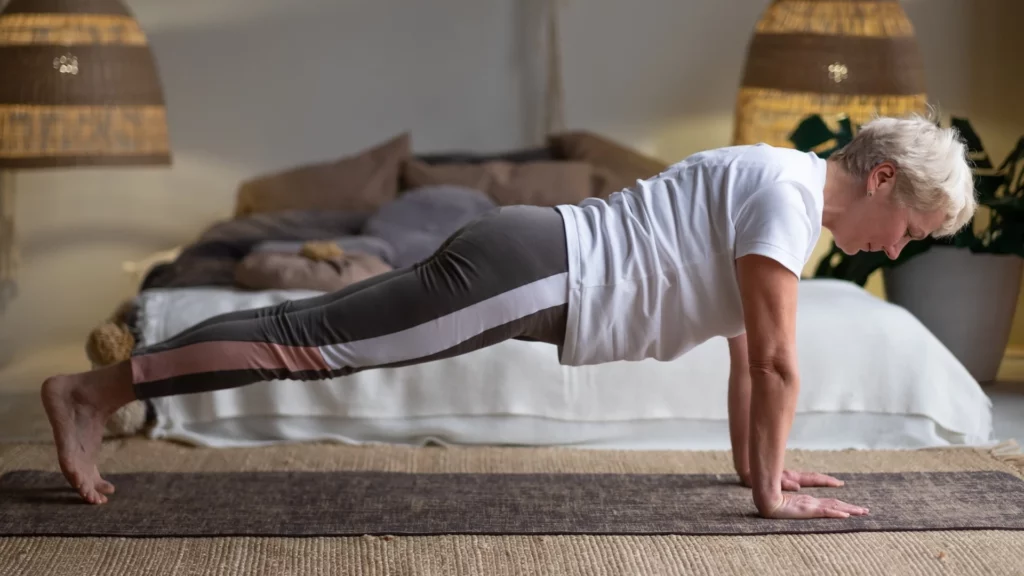
Maintaining the strength and flexibility of the respiratory muscles is the first step in increasing lung capacity. Start by focusing on yoga postures that target the muscles and ligaments of the upper torso, such as:
- Sun Salutations (Surya Namaskar) is a sequence of 12 postures that moves the spine in all directions and alternates inhalation and exhalation, which helps to oxygenate the body.
- Plank Pose (Phalakasana) is a static asana that works the entire body, strengthens the muscles around the chest wall, and increases blood circulation through the pulmonary veins and capillaries.
- Backbends, such as Cobra Pose (Bhujangasana) and Upward Facing Dog Pose (Urdva Mukha Svanasana) strengthen the back and tone and stimulate the cartilage of the respiratory tract, increasing the efficient functioning of the lungs.
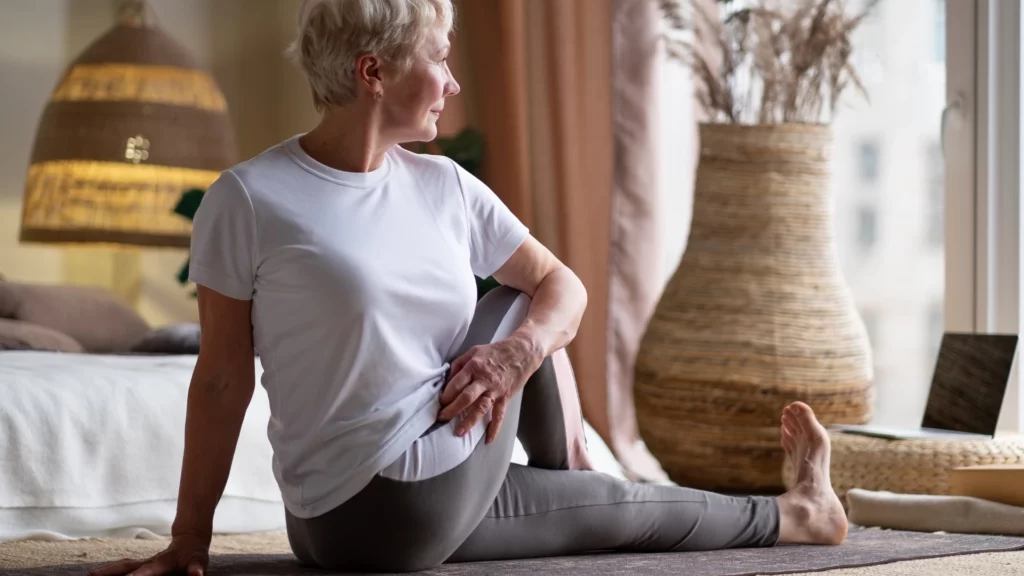
- Twists, like Seated Half Spinal Twist Pose (Ardha Matsyendrasana), induce deep breathing and aid in better oxygen circulation in the lung cavity. Bonus: twists also help to boost our immune system and relieve back pain and stiffness.
Pranayama: Yoga Breathing Practices to Increase Lung Capacity

Practice pranayama techniques that focus specifically on lengthening the exhalation.
The following pranayama practices work to gradually and comfortably increase the length of your exhalations. Start with Long Exhalation Breath (see below), in which you slowly increase your exhalation to be twice the length of your inhalation.
Once you feel comfortable with the long exhalation, consider trying Ladder Breath (Viloma Pranayama). Viloma means “against the natural flow” and involves pausing or segmenting the breath. While Viloma can be done in three ways (pausing either the inhalation or exhalation, or both), this particular version focuses solely on segmenting the exhalation into three parts to increase lung capacity.
Please note: When doing any exercise, but specifically breathing exercises, if you ever feel agitated or short of breath, then return to equal inhalations and exhalations.
Breathing Exercises: How to Practice Long Exhalation in Yoga
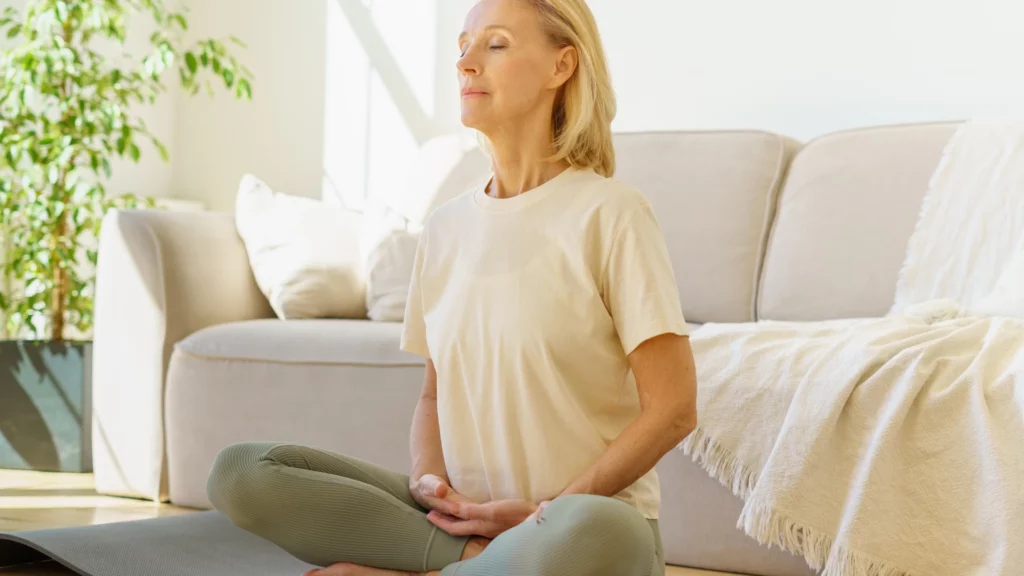
- Lie on your back or sit in a comfortable position. Place one hand on your abdomen and feel the belly expand with each inhalation and relax with each exhalation.
- Start to count the length of your inhalation and exhalation. It doesn’t matter what the number is as long as you are feeling comfortable and not forcing your breath. Find a rhythm in which the inhalation and exhalation are equal in length.
- Once the inhalation and exhalation are equal, gradually lengthen the exhalation until you get to a 1:2 ratio. For example, if the inhalation is 3 counts, then the exhalation will be 6 counts.
- Make sure that you are not forcing the exhalation to a place of discomfort. If you feel agitated or short of breath at any time, then return to equal inhalations and exhalations.
Breathing Exercises: How to Practice Viloma Pranayama In Yoga
- As in the previous practice, begin either lying on your back or seated in a comfortable position. Bring one hand to your abdomen and feel the belly expand and contract with each breath.
- Establish an equal breathing pattern for 3 to 5 breaths. This should feel comfortable.
- Next, take an inhalation. Then engaging your low belly, exhale one-third of the breath. Pause for 1 to 2 seconds before continuing to exhale another third, feeling your upper belly muscles engage. Pause again before exhaling the remainder of your breath.
- Repeat this pattern of inhaling and exhaling in three parts with pauses after each for 5 to 8 rounds. Please note: If at any point you feel like the breath is forced or you are lacking air, return to regular breathing.
- End by returning to the equal breathing pattern for 2 to 3 breaths.
Yoga Breathing Exercises for Healthy Lungs
Regular yogic breathing practices can help rid the lungs of bad or stale air, increase oxygen levels, and get the diaphragm returning to its job of helping you breathe. Happy practicing!
Also, read...
Related courses
Exploring the Stages of Being: The Yoga of Inner Peace
With Judith Hanson Lasater
Livestream with Ellen Saltonstall: Yoga for Bone Health, Strength and Balance
With Ellen Saltonstall
Reprinted with permission from Beverly Davis-Baird/WisdomTreeYoga.

Beverly Davis-Baird, MA, e-RYT200/RYT 500, C-IAYT is a New Jersey-based yoga therapist, writer, and educator. She specializes in making yoga accessible for adults 50+, offering classes and workshops for back care, arthritis, bone health, balance, posture, and healthy aging. An educator at heart with over 20 years of experience as a public school teacher, Beverly brings her knowledge of individual learning styles to her classes, providing instruction that is clear, concise, inclusive, and compassionate. Bringing over 30 years of experience and training, she considers herself a lifelong learner and believes that the practice of yoga should bring spaciousness and release from tension, not create it. As such, she strives to make yoga accessible to people of differing abilities, believing the real benefits of yoga come from what is taken with you outside of class and into your life. To read her blog or learn more about her teaching schedule and latest offerings, please visit www.wisdomtreeyoga.com.
Recent articles
Yoga for Neck Pain: 2 Relaxing Poses
Aug 10 –
Mountain Pose: A Different Take on Yoga’s Most Essential Posture
Aug 09 – By: Kaoverii Weber
Categories
Upcoming courses
Exploring the Stages of Being: The Yoga of Inner Peace
With Judith Hanson Lasater
Livestream with Ellen Saltonstall: Yoga for Bone Health, Strength and Balance
With Ellen Saltonstall
Yoga Freebies
Recent articles
Almost there...
Sorry, we couldn't find anything...
Chronic Pain
Yoga for Neck Pain: 2 Relaxing Poses
Do you experience neck pain? If so, you’re not alone. According to Harvard Health,…
Aug 10 –
Yoga & Wellness
Yoga for Lymphatic Drainage: How to Use Yoga to Support Your Immune Health
After living through a global pandemic, immune health is on all our minds. We…
Aug 09 –
Pose Library
Mountain Pose: A Different Take on Yoga’s Most Essential Posture
The mountain: majestic, powerful, immovable. In asana practice, everything comes from the Mountain Pose…
Aug 09 – By: Kaoverii Weber
